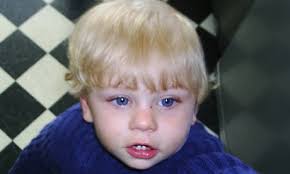Understanding the Baby P Case and Its Impact on Child Protection

Introduction
The tragic case of Baby P, who died in 2007 at the hands of his mother and her boyfriend, sent shockwaves throughout the United Kingdom and raised crucial questions about the effectiveness of child protection services. This case highlighted significant lapses in safeguarding measures and remains a pivotal moment in discussions surrounding children’s welfare.
The Circumstances of Baby P’s Death
Peter Connolly, known as Baby P, was just 17 months old when he died after months of abuse and neglect. Despite being on the radar of various child protection agencies, including social services, the police, and health professionals, Baby P’s plight went largely unheeded. Authorities missed multiple opportunities to intervene, leading to his tragic death. An intensive media coverage of the case unearthed systemic failures, including the lack of coordination between different agencies involved in child welfare.
Consequences and Reforms
The fallout from the Baby P case was immediate and severe. Following an extensive public outcry, the Children, Schools and Families Select Committee launched an inquiry into the events surrounding the case. The report identified critical failures within Haringey Council, which was responsible for Baby P’s welfare, and recommended sweeping reforms across child protection practices. These included better training for social workers, clearer guidelines for collaboration among agencies, and the establishment of the Serious Case Review process to evaluate such incidents comprehensively.
Impact on Child Protection Practices
In the years following Baby P’s death, the United Kingdom has seen significant changes to child protection policies. The government introduced the Children Act 2004, aimed at improving collaboration between agencies sharing information on vulnerable children. Social work training programmes have also been revised to incorporate lessons learned from the case, underscoring the importance of multiagency collaboration and communication in safeguarding children.
Looking Forward
There is still much work to be done to ensure that no child suffers the same fate as Baby P. Recent reports indicate that child protection services across the country are under considerable pressure, with rising numbers of children entering care systems. Experts urge for continuous improvements and vigilance in safeguarding practices and call for regular audits and updates to strategies to protect vulnerable children. The case of Baby P serves as both a cautionary tale and a catalyst for change, reminding everyone of the critical responsibility society holds to safeguard its youngest members.
Conclusion
The Baby P case continues to resonate in discussions about child welfare and protection policies. Its significance cannot be overstated, as it serves as a reminder of the vulnerabilities faced by children and the imperative of effective action from safeguarding authorities. Ongoing efforts to reform and enhance child protection systems are essential to prevent similar tragedies in the future, ultimately ensuring that every child’s right to a safe and nurturing environment is recognised and upheld.
